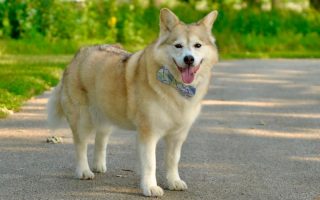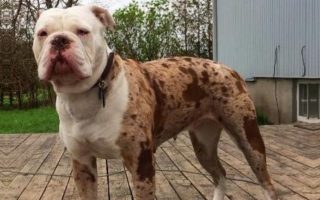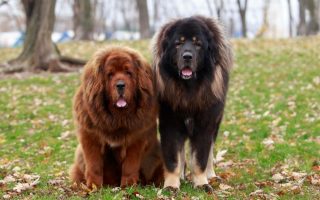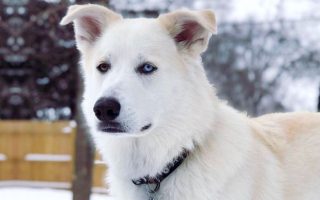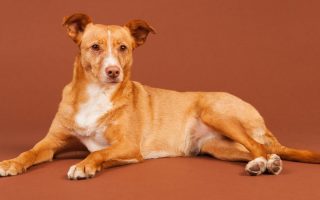An entertainer, lover, and friend, the American Eskimo is a small dog who doesn’t realize she’s small.
There’s a lot of energy packed up in that small, white frame, that it often comes as a surprise for pet parents who assumed the American Eskimo Dog’s energy would fit her size.
Of course, there’s a lot of other qualities embedded in the American Eskimo Dog to make her worth having by anyone.
This doesn’t mean everyone should have one. People tend to rush at the American Eskimo Dog because of her exotic beauty, only to get overwhelmed by her challenges.
This breed is a full package, and unreadiness can lead to frustrations.
Like any other breed, you need to be conversant with the strengths and weaknesses of the American Eskimo Dog to make a logical choice.
Eskie—as this furry is fondly called—has her needs, difficult traits, and many other characteristics that make her an interesting dog breed.
As a versatile, talented, and intelligent dog, she’s a delight to owners, but she can be a handful for those who can’t handle her.
The decision to own an American Eskimo is a wonderful one, just as long as it’s not made out of sentiments alone.
In this article, we would be profiling the American Eskimo Dog facts and breed information, bringing to you everything you need to know. We will cover her characteristics, interesting facts, temperament, caring, training tips, and other important aspects.
Key American Eskimo Dog Breed Information & Facts
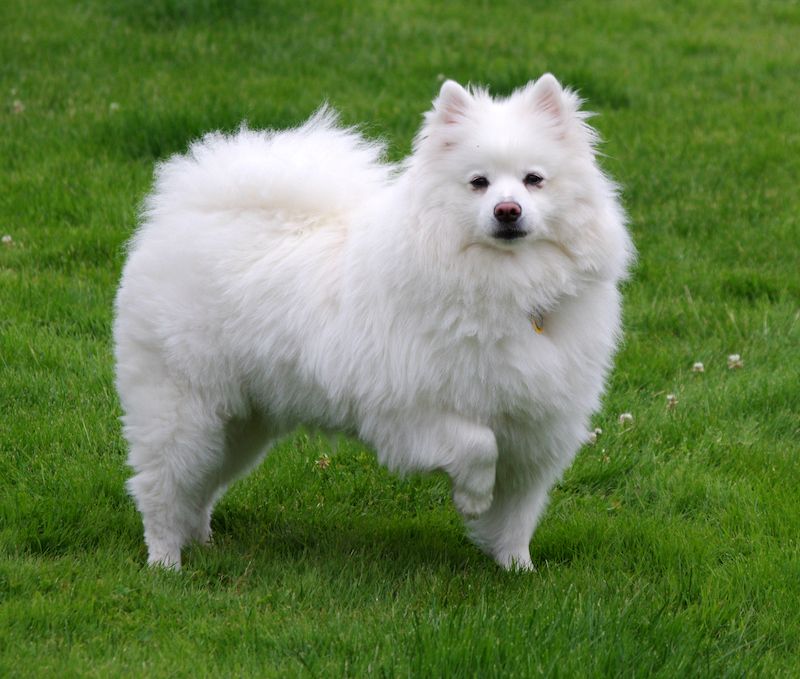
| Dog Breed Group | Companion Dogs |
| Height | 15 to 19 inches |
| Weight | from 30 pounds |
| Coat | Soft, dense |
| Color(s) | White |
| Life Expectancy | 12 – 15 years |
| Temperament | Clever, Playful, Stubborn |
| Origin | Germany, United States |
| Bred For | Herding, hunting, livestock guard, companionship |
| Nickname(s) /Other Name(s) | Cloud Spitz, American Spitz, German Spitz, Dog beautiful, Eskie |
| Recognized by the AKC, UKC, ANKC | Yes |
American Eskimo Dog Characteristics
- Adaptability: The American Eskimo Dog adapts well to apartment living and can live in a big yard, as well.
- Friendliness: Eskies are friendly, especially with family. With strangers, they are withdrawn, though not aggressive.
- Kid-Friendly: American Eskimo Dogs flow with children and love to have fun with them.
- Pet-Friendly: With other dogs, American Eskimo Dogs have no issues. They also relate well with cats they are brought up with but will see rodents as prey.
- General Health: Eskies are generally healthy breeds, though they have some health issues.
- Grooming Needs: Grooming the American Eskimo isn’t a daunting task, but it does take some effort, especially when they are shedding.
- Trainability: The American Eskimo Dog is trainable, but it is not easy.
- Intelligence: Considered one of the most intelligent breeds, the American Eskimo Dog is highly intelligent, curious, and smart.
- Playfulness: As an entertainer, the American Eskimo Dog loves to play.
- Exercise Needs: The American Eskimo Dog needs a lot of exercises to be satisfied.
- Energy Level: The American Eskimo Dog is energetic and acts like a big dog in a small body.
- Tendency to Bark: High. The American Eskimo is a barker. This is one reason he’s a good watchdog.
- Tendency to Drool: The American Eskimo Dog hardly drools, which is good news for pet parents who don’t like slobber.
- Tendency to Snore: The American Eskimo Dog hardly snores.
- Tendency to Dig: When bored or anxious, digging is a habit the American Eskimo Dog uses to distract herself.
Interesting facts about the American Eskimo Dog breed
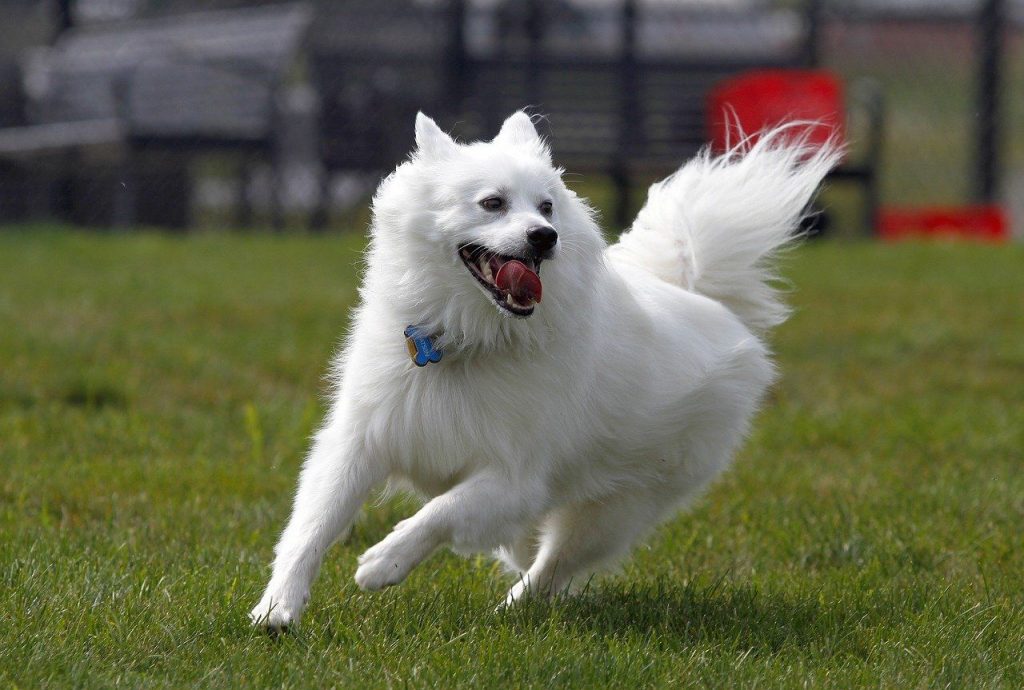
Fact #1: American Eskimo Dogs were once circus dogs
Once upon a fun time, the American Eskimo Dog participated in circuses and captured the audience.
They were comfortable in the spotlight and attracted viewers with their coat color.
Their success with traveling circuses was due to their intelligence, trainability, and agility.
In fact, an American Eskimo Dog was the first dog to walk a tightrope. This particular feat added to their overall popularity.
Fact #2: They can dance
In addition to the walking tightrope, performing stunts, and dazzling the audience with their white coat, the American Eskimo Dog also got people’s attention by dancing to the tune of songs.
Today, they haven’t lost that ability. Many YouTube videos show the American Eskimo displaying some dancing moves. Talk about the life of the party!
Fact #3: They come in three sizes
While there is a standard size that is recognized by the American Kennel Club, the American Eskimo has three size versions.
Another dog breed with this size variation is the poodle.
The three sizes include toy, miniature, and standard.
Fact #4: The American Eskimo Dog can have a ‘biscuit’ color
A quality that sets the American Eskimo Dog apart is her coat color. Appealing to the eyes, the color is the major reason this breed is called the American Eskimo Dog.
Many people are swayed by the white color when getting the American Eskimo Dog.
As if the beauty of the white isn’t enough, the American Eskimo Dog tops it up by appearing sometimes with a brownish color that makes you think of delicious biscuits.
These two colors are accepted as standard.
Fact #5: They love toys
The American Eskimo Dog is a sucker for toys. Whether this fascination came from their circus days, we can’t tell.
What we do know is that they love having toys to play with. Toys can serve as playtime objects, a form of exercise.
Breed History & Origin
No one knows where the American Eskimo Dog truly originated from.
What we do know is that he’s a member of the Spitz family and must have come into the United States thanks to German immigrants sometime in the 1900s.
Some dogs believed to be ancestors of the American Eskimo Dog are the German Spitz, Keeshonden, and Pomeranian.
Back then, the American Eskimo Dog was called the American Spitz as an act of patriotism.
It was in America that the white color came to be associated with the American Spitz.
World War 1 brought the American Spitz to the limelight.
Soon, they became entertainers in circuses, to the delight and admiration of the audience. One such circus that made use of the American Spitz was the Cooper Brothers’ Railroad Circus in 1917.
Still, in the same 20th century, an American Spitz dog named Stout’s Pal Pierre made circus history by walking a tightrope.
After World War 2, the American Spitz remained popular.
In 1919, the American Spitz was recognized as the American Eskimo by the United Kennel Club, for little known reasons—probably because of the white coat.
In 1985, the American Eskimo Dog Club was founded. 10 years later, the American Kennel Club recognized the breed.
Another club that recognized this breed was the Canadian Kennel Club in 2006.
American Eskimo Dog Temperament & Intelligence
For many people, the white coat of the American Eskimo Dog is enough to make them open their wallets.
If you’re walking down the street or playing in the park with an American Eskimo Dog, don’t get offended by the stares, pointed fingers, unsolicited compliments, and incessant questions like ‘what dog breed is that?’ and ‘can I touch?’ It comes with the territory.
The beauty of the American Eskimo Dog transcends their white coat, though.
They’ve got the personality to keep you interested for long.
A spirited, clever hard worker, the American Eskimo Dog is an active dog. They’re not your regular idle pets.
The American Eskimo Dog is an entertainer by nature, a quality that earned them a spot in circuses.
They are friendly and open with their family members, but suspicious and reserved when they meet a stranger.
This wariness is a trait with two sides, good and bad. On one hand, it makes them good watchdogs.
On the other hand, you have to socialize them so their wariness doesn’t turn into anxiety and lead to fear-induced aggression.
The American Eskimo Dog is also super intelligent and energetic, a combination that calls for physical and mental exercises.
With a knack for solving problems, the ability to think for themselves, and intense curiosity, the American Eskimo Dog is considered one of the most intelligent dogs.
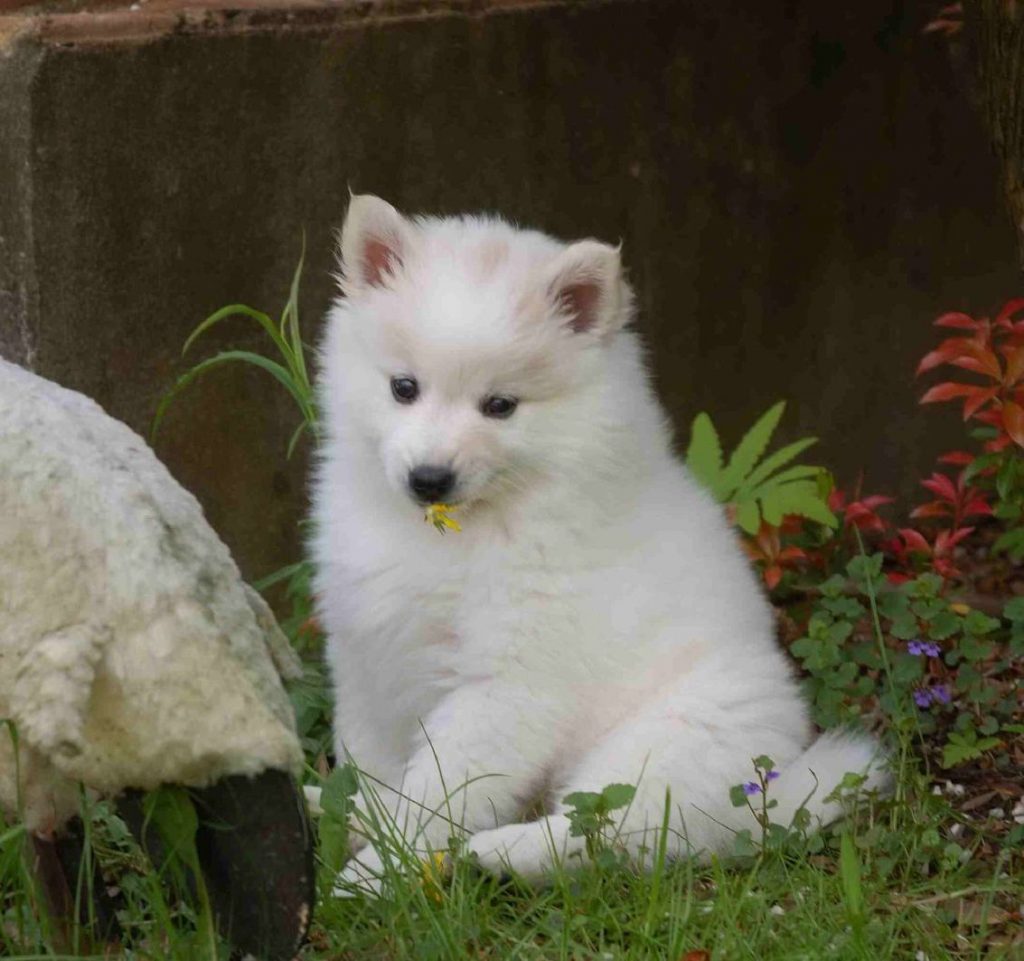
Is American Eskimo Dog a good family dog?
Eskie falls under the breed group of companion dogs, and she doesn’t slack in that role. A friendly, clever, and affectionate dog, the American Eskimo is a pet keeper.
Many pet parents also love the strong intelligence of the Eskie, as well as her watchdog ability. If she notices an unusual person approaching, you’ll know. Having said that, it would be inaccurate to claim that the American Eskimo Dog can fit in every family and with any kind of pet parent.
There is a lot to consider before you even take a trip to a breeder. Without proper research, you’d end up a frustrated pet parent with a reckless dog. If you can handle their many needs, this white, fluffy breed makes a good family dog.
Are American Eskimo Dogs good with kids?
Just as with adults in the family, Eskie is fond of kids and opens her heart to them. Her affection is unreserved for anyone she considers family, and she doesn’t get snappy around a child.
Some safety measures should be taken, though. Interactions between a child and an American Eskimo must be under supervision. It is better to err on the side of caution with dogs. Let your children know how to approach an Eskie and be careful with the white coat.
Finally, smaller kids may be overwhelmed by the energy of the American Eskimo. It is ideal to have them in a home with grown kids.
Are American Eskimo Dogs good with other dogs and pets?
Eskie is used to being in a pack and doesn’t get territorial. It is advisable to give Eskie a partner dog to avoid boredom and anxiety on her part.
They flow nicely with other dogs. Eskie can cope with a cat she grew up with, but that’s where tolerance of other pets ends. Small animals like rabbits may be confused as prey.
Male vs. Female American Eskimo Dog
So far, we’ve looked into this breed’s characteristics, history, facts, and temperament.
What about gender? For someone who’s interested in getting an American Eskimo for the first time, what gender is better?
You may also have an American Eskimo and wonder if there’d be an issue of same-sex aggression if you get a male-male or female-female duo.
It’s hard to give a definite answer, but you can conclude with the facts.

The Eskie male is larger than the female, though the difference isn’t so obvious as to make them seem like variations of the same breed.
In height, the males tend to be an inch taller. They weigh similar pounds, from 30.
Like every other living being, the female Eskie can reproduce.
Thus, if you have a male-female duo, you may be dealing with Eskie puppies after some time.
There are some differences in appearance, too. Male American Eskimos come with a thicker coat and are more profuse than their female counterpart.
In personality, expect the same behaviors. Although male dogs are often seen as more outdoorsy and dominant, it depends on the individual Eskie.
Overall, there isn’t one Eskie gender that’s better than the other.
The gender distinctions are not so glaring as to become a big factor. It all boils down to preference.
Caring for an American Eskimo Dog Breed
A beautiful, well-behaved American Eskimo doesn’t just happen. It isn’t something you can wish on a shooting star, or rub a lamp and make it one of your three wishes.
Such methods end with Disney. Out here, you have to put in the work.
It is sometimes tiring, sometimes frustrating, but the reward of a flourishing American Eskimo Dog is worth the struggle.
The first thing to bear in mind is that the American Eskimo Dog is an active, intelligent breed.
He has a lot of energy underneath that fluff, and if you judge him by his size, that’d be your first mistake.
Eskie needs a lot of physical and mental exercise. If she gets bored and idle, she’d invent ways to stay busy.
As a result, she’d bark incessantly, chew objects, dig holes, or do something else that’s undesirable. When she’s well exercised, Eskies can even cope in an apartment.
While you admire her white coat, remember that it needs maintenance, or it’d turn into something you don’t want to admire.
Grooming is an integral part of caring for your Eskie, especially when she’s shedding. The right tools will go a long way towards making her neat and proper.
Here’s a blunt note to consider in Eskie care: this breed is not easy to train.
If you’re a newbie and the glowing coat of the American Eskimo makes you want to start out your pet journey with her, we advise you to reconsider.
The American Eskimo Dog is not for the inexperienced, timid, or pushover.
Eskie’s a dominant canine, and she’d want to lead the pack if you don’t step up.
Finally, take care of her health through regular checkups and quick visits to the vet if you notice anything unusual.
American Eskimo Dog Food and Diet
Like other breeds of similar size, the American Eskimo Dog has a diet to follow. Feeding requirements vary according to an individual Eskie’s needs.
That said, there are guidelines that pertain to the breed in general and should not be overlooked.
As a puppy, the American Eskimo is hyper and uses up a lot of energy.
For the Eskie pup to grow into a healthy adult, there are some important nutrients that should be included in their diets.
Protein is an example. Before they grow, your Eskie puppy should be fed only puppy food.
You can start by feeding them 4 times a day, then reduce it as they grow. Don’t forget water.
Eskie adults need both dry and wet food, served twice a day. Some American Eskimos are allergic to foods like Salmon, others can eat anything.
If you notice any allergic reaction from your Eskie, get her treated and desist from feeding her that particular meal.
There are some foods Eskies should avoid as they can be damaging. Human food should be kept at a minimum.
Chocolates, onions, grapes, avocadoes are examples of what you should not feed an American Eskimo Dog. Rawhides and little bones can be detrimental, as well.
The senior American Eskimo is less active and would often be found indoors, chilling on the carpet. Feed the senior with discretion to avoid obesity.
American Eskimo Dog Exercise
The American Eskimo is suitable for the indoors, whether it’s an apartment or in the living room of a large yard.
They don’t do well outside and alone. However, their energy is more than their size.
Eskies need a lot of physical and mental exercise which should be varied and fun enough to keep them interested.
An exercise is equally a good tool for training and a source of good health.
To satisfy their exercise need, be ready to go for at least an hour. Sounds daunting? Eskie may not be your suitable pet.
Exercise should consist of many activities and has to be consistent. An exercise starved Eskie is a rebellious canine
Try not to repeat activities or your Eskie would get bored and not comply with your instructions.
If you’re a jogger, the Eskimo Dog can be your companion as you burn calories at 6 a.m. Jogging can use up their energy with ease.
Hiking is another long activity you and your Eskie would love. It can be a great bonding moment.
Related:
Other physical and mental activities include puzzles, fetch, and playtime with toys.
For Eskie puppies and seniors, less is more. Puppies need just enough to grow, not break their bones.
The Eskie senior’s mellow nature can leave her prone to weight gain. She needs exercise to maintain balance.
American Eskimo Dogs are not wild canines who can’t be trained. Thanks to their intelligence, learning is easy.
The only problem is, sometimes they may not want to. Eskie is used to thinking on her own.
For a breed whose ancestors walked tightropes and kept people in awe, she’d certainly assume she knows better than normal you.
Because of this independent nature, they are not suitable for first-time owners. What’s more, they are pack animals, and a pack needs a leader.
If your Eskie doesn’t feel you’re capable of being in charge, she won’t hesitate to take over as alpha.
This is why you should have enough experience and confidence to handle an Eskie.
One way you can point out that you’re in charge is by controlling their feeding. Don’t feed them first, and definitely not when it isn’t mealtime.
For less difficult training, start while Eskies are puppies, not when they have already grown.
Puppies learn faster and are flexible, so weeding out bad habits is less mountainous.
For a wary and stubborn breed like the Eskie, early obedience training and socialization should not be neglected.
A final point to note in Eskies’ training is to avoid being harsh with them. Beating and strong words will only make them more stubborn.
Instead, a firm rebuke is enough to keep them on track. When they get something right, praise and reward them.
American Eskimo Dog Grooming Needs
Grooming your American Eskimo Dogs is not an underrated activity, but one of Eskie’s needs.
The white, dense coat has to be maintained on a regular basis. You can do it yourself or hire a groomer if you have the means to.
American Eskimos do shed, especially when the weather goes warm.
You should give them regular brushing, preferably with a pin brush. While brushing, break off tangles and mats on them.
Also, keep your environment clean with the use of a vacuum cleaner. What’s more, the American Eskimo Dog is not hypoallergenic.
If you’re allergic to dog fur, do not get this breed.
For a dog who looks a lot like snow, Eskie doesn’t get easily dirty. The oil on her coat prevents dirt from sticking to it.
That oil is important and risks being removed if you bathe them too much, leading to dryness and skin irritation. Bathing should be reserved for when they get too dirty.
Toenails need to be clipped like once a week, with care. You do not want a situation where your Eskie panics at the sight of you with a nail clipper.
It is best to be unhurried, calm, and patient with this.
Another part to be taken care of is their ears. Wipe it regularly with a cotton ball and ear cleanser.
American Eskimo Dog Health Conditions
The American Eskimo Dog has a long life potential and good health. This is one more reason why you should put the effort into their well-being.
With proper feeding, exercise, and grooming, visits to the vet will be reduced to normal checkups.
Having said that, there are medical conditions to keep in mind while owning this breed. They include:
Hip dysplasia
Hip dysplasia is a common, inherited condition that affects many dog breeds, including the American Eskimo Dog.
It occurs when the thigh bone does not fit into the hip joint, leading to abnormal movements, pain, and other mobility-related complications.
A good breeder would ensure the Eskie puppy has little chance of getting this condition from the parents.
Ensure you check medical records before buying or adopting an Eskie puppy.
Progressive Retinal Atrophy
Shortened as PRA, Progressive Retinal Atrophy is a set of eye diseases that affect the retina and gradually destroy it.
It first leads to night blindness, then a total optical impairment when left untreated.
Cataracts
Cataract is caused by a cluster of proteins which results in a cloudy substance that envelopes the lens and blocks light necessary for sight.
It can be inherited or a sign of some diseases like diabetes.
Pyoderma
Pyoderma is a skin infection that leaves red zits which closely resemble pimples in humans.
Symptoms include itching, flakes on the skin, and loss of hair.
Frequently Asked Questions
What is American Eskimo Dog known for?
American Eskimo Dogs became popular shortly after the first World War. They entertained a lot of people via circuses and are known for being the first dog to walk a tightrope.
Today, they make good family companions and watchdogs.
How big do American Eskimo Dog get?
The American Eskimo Dog comes in three different sizes: toy, miniature, and standard. The standard height of a full-grown American Eskimo Dog is 15 to 19 inches with a weight of 30 pounds.
Are American Eskimo Dogs cuddly?
Though they are indoor pets, American Eskimo Dogs are energetic and may not stay put long enough for a cuddle. They’d rather be in a busy family with things to do.
When they become seniors, however, the American Eskimo becomes mellow and would love to cuddle.
Is it hard to train and care for American Eskimo Dog?
The American Eskimo Dog can be a handful for the inexperienced, especially during training and grooming. The stubborn, beautiful breed is high maintenance.
Plus, their energy level is high, requiring a lot of exercises. Overall, it is somewhat hard to take care of an Eskimo Dog, but worth the effort.
How long do American Eskimo Dogs live?
American Eskimo Dogs have the ability to live long, all things being equal. They have a life span of 12 to 15 years.
How much does an American Eskimo Dog cost?
The American Eskimo Dog is a very popular breed right from the 20th century. Thus, they are not cheap. An Eskie puppy costs around $1,000 to $2,000.
Do American Eskimo Dogs shed?
American Eskimo Dogs shed a lot, especially during the hot climate when they shed their topcoat. You need to brush them more during those seasons and vacuum regularly.
What do American Eskimo Dogs prey on?
Though American Eskimo Dogs were not bred to be hunters, they have a high prey drive. They’re particularly fascinated with rodents and rabbits.
Is an American Eskimo Dog the same as a Samoyed?
The American Eskimo Dog and the Samoyed have a lot in common. Their similar white coat color makes the casual passerby think they are the same breed or variations of the same breed.
However, they are two distinct breeds. The main difference between them is the size. The Samoyed is bigger and taller than the American Eskimo.
Is the American Eskimo Dog right for you?
Eskies are clever, intelligent companions who love to entertain family members and show love to them. Eskies are good with both adults and kids and adapt to different living conditions.
They are, however, not for everyone. Due to their stubbornness and independent spirit, new pet parents may end up frustrated with them. If you’re not a sports enthusiast, the American Eskimo Dog may be too overwhelming for you.
If you can handle the training, exercise, and other needs of Eskies, then they are right for you.
Related: Complete Alphabetical List of Dog Breeds
Final Thoughts
To wrap up, the information in this American Eskimo Dog facts and breed information is a good start and could help you decide if an Eskie is right for you or your household.
Eskies are beautiful dogs that are fit for different environments and make pet parenting fun.
They keep their wariness and suspicions only for strangers. With family, they want to show love.
Having said that, they are tough to train, have a high exercise need that can be matched by an active few, and a coat that’s likely to leave fur all over your place.
If you haven’t gotten an American Eskimo yet but you plan on owning one, there are many factors to note.
Have a budget not only for the initial purchase, but every other cost you will incur in pet parenting.
They’re good with many environments so you may not have issues here, but have a place that can accommodate a snowy barker. Compare your lifestyle to Eskie’s needs and see if they fit.
Your level of experience matters, as well. As an emphasis, the American Eskimo Dog is not a good first-time dog.
Once you can take care of the American Eskimo and train this dominant breed, you’d have a companion, watchdog, and playmate for a long time.
Helpful and Useful Resource
Official Breed Profile: American Eskimo Dog breed information on AKC, UKC, CKC



